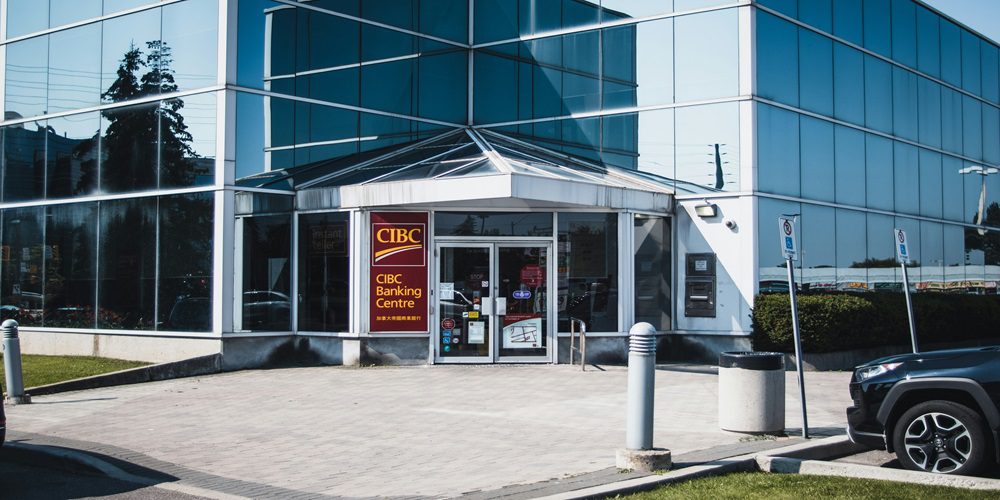Are you a small business owner looking to take your enterprise to the next level? Well, look no further! In today’s fast-paced and competitive market, having access to credit facilities can be a game-changer for small businesses. Whether it’s expanding your inventory, hiring more employees, or even investing in new technology, utilizing credit facilities can provide you with the necessary financial backing. Join us as we unravel the top 5 benefits of incorporating credit into your business strategy and discover how it can help skyrocket your success!
Introduction to credit facilities for small businesses
Small businesses often struggle with securing funding or accessing credit in order to grow and expand their operations. This is where credit facilities come into play – providing a lifeline of financial support and stability for small businesses. In this section, we will discuss the key elements and benefits of credit facilities for small businesses.
What are Credit Facilities?
Credit facilities can be defined as loans or lines of credit that are extended to businesses by financial institutions such as banks, credit unions, or online lenders. These facilities enable small businesses to access funds on an ongoing basis, allowing them to manage their cash flow effectively.
Types of Credit Facilities
There are various types of credit facilities available for small businesses, including business loans, revolving lines of credit, trade financing, equipment financing and invoice factoring. Each type serves a different purpose – from providing working capital to purchasing necessary equipment or even supporting international trade transactions.
Benefits of Credit Facilities
Benefit 1: Easier access to capital
One of the top benefits that small businesses can enjoy when utilizing credit facilities is easier access to capital. As a small business owner, securing funding or additional capital can often be a daunting and challenging task. This is especially true if you have a limited credit history or lack substantial collateral.
However, with credit facilities from banks or financial institutions, small businesses can obtain funds quickly and easily without having to go through lengthy approval processes. Credit facilities such as lines of credit, business loans, and revolving credit can provide entrepreneurs with the necessary resources to grow their business or cover unexpected expenses.
One of the main advantages of utilizing credit facilities for access to capital is the speed at which funds can be obtained. Traditional methods such as applying for loans from banks or investors may take weeks or even months before an entrepreneur receives the needed funds. On the other hand, using a line of credit or other credit facility allows for almost immediate access to cash whenever it is needed.
Moreover, unlike traditional loans where entrepreneurs need to have specific reasons for borrowing money, lines of credit provide small businesses with more flexibility in how they use the borrowed funds. This means that businesses can use these funds for various purposes such as purchasing inventory, expanding operations, covering payroll expenses during slow periods, or investing in new equipment.
Benefit 2: Improved cash flow management
Managing cash flow is a persistent challenge for most small businesses. As they try to keep up with daily operations, cover expenses, and make necessary investments for growth, maintaining a healthy cash flow can often become overwhelming. This is where utilizing credit facilities can bring significant benefits to small businesses.
Credit facilities such as business loans or lines of credit can help small businesses improve their cash flow management in several ways. First and foremost, these financing options provide access to much-needed capital when funds are tight. With a line of credit, for example, a business owner can draw upon the approved amount whenever needed to cover immediate expenses or unexpected costs. This flexibility allows businesses to bridge the gap between paying bills and receiving payments from customers.
Moreover, utilizing credit facilities also helps smooth out seasonal fluctuations in revenue. For many small businesses, certain times of the year may be slower than others due to factors like weather conditions or consumer behavior. During these periods of decreased sales, it can be challenging to keep up with fixed expenses such as rent and payroll for employees. By using a business loan or line of credit, small businesses can avoid cash flow gaps during slow seasons and maintain stability throughout the year.
Another significant advantage of utilizing credit facilities is that it provides a safety net for unforeseen emergencies. Whether it’s equipment breakdowns or unexpected tax bills, having access to quick funding through credit facilities can save businesses from potential financial crises. Without this safety net, many small companies would not be able to survive an unexpected hit on their cash flow.
Benefit 3: Ability to take advantage of business opportunities
One major benefit of utilizing credit facilities for small businesses is the ability to take advantage of business opportunities. In today’s fast-paced and competitive market, it is essential for small businesses to be able to act quickly on opportunities that can potentially boost their growth and success. However, without sufficient funds, it can be challenging for a small business to seize these opportunities.
Credit facilities provide a valuable solution by allowing businesses to access additional funds when needed. This gives them the financial flexibility to invest in new projects, purchase necessary equipment or inventory, or even expand into new markets. By having access to credit, small businesses are better equipped to capitalize on emerging trends and stay ahead of their competitors.
Moreover, with credit facilities in place, businesses do not have to rely solely on their own resources or wait for customers’ payments before making important investments. This minimizes the risk of missed opportunities due to cash flow limitations. Additionally, by using credit instead of draining their cash reserves, businesses can maintain a healthy working capital that can be crucial during unforeseen challenges or economic downturns.
Another advantage of utilizing credit facilities for taking advantage of business opportunities is the potential tax benefits. Interest paid on loans can typically be deducted from taxable income in many countries, which can result in significant savings for small businesses. This allows them to reinvest these saved funds back into their operations or pay off the loan faster.
Benefit 4: Build credit history and improve credit score
One of the most valuable benefits of utilizing credit facilities for small businesses is the opportunity to build a strong credit history and improve your overall credit score. In today’s competitive business world, having a good credit standing can significantly impact the success and growth of your company.
Having access to various forms of credit, such as business loans, lines of credit, and trade accounts, allows you to demonstrate your ability to manage debt responsibly. By making timely payments and effectively managing your business’s finances, you can showcase your financial stability and credibility to potential lenders or investors.
A positive credit history not only reflects well on your business but also provides you with more opportunities for future financing. Lenders often consider an applicant’s credit report when evaluating loan applications, so having a strong track record of managing debt can increase your chances of securing larger loans with better terms.
Furthermore, utilizing credit facilities can have a direct impact on improving your company’s overall credit score. Your personal and business credit scores are important indicators that determine whether or not you qualify for financing and what interest rates you’ll receive. By using different forms of credit responsibly, you can demonstrate that you’re capable of handling borrowed funds while building up a favorable repayment history.
Benefit 5: Flexibility in repayment options
As a small business owner, one of the biggest challenges can be managing cash flow and ensuring that you have enough funds to cover your expenses. This is where credit facilities come in handy. While traditional loans may have rigid repayment terms and fixed monthly payments, credit facilities offer flexibility in repayment options, making them a valuable tool for small businesses.
One of the main benefits of utilizing credit facilities for small businesses is the ability to choose from different repayment options. These options include variable interest rates, flexible payment schedules, and even the option to make interest-only payments during certain periods. This allows small business owners to tailor their repayments according to their specific financial situation.
For example, if your business experiences seasonal fluctuations in revenue, you can opt for a flexible payment schedule that allows you to make larger payments during peak months and smaller payments during slower months. This not only helps with cash flow management but also ensures that you are not overburdened with monthly payments when your income is lower.
Another advantage of flexibility in repayment options is the ability to choose between fixed or variable interest rates. Fixed interest rates provide stability as they remain constant throughout the life of the loan, making it easier for businesses to budget and plan their finances. On the other hand, variable interest rates may fluctuate depending on market conditions but often start out lower than fixed rates. Small business owners can weigh these options and choose what best suits their needs.
Moreover, credit facilities also allow for interest-only payments during certain periods or until a specific milestone is reached. This can be beneficial for new businesses or those going through temporary financial difficulties as it reduces immediate pressure on cash flow while still allowing them access to necessary funds.
Case studies/examples of successful businesses utilizing credit facilities
In recent years, many small businesses have thrived by taking advantage of credit facilities to support their growth and operations. Let’s take a look at some real-life examples of successful businesses that have utilized different forms of credit facilities to their advantage.
1. Dropbox:
Dropbox is a widely recognized cloud storage and file-sharing company with over 14 million paying users. During the early stages of its business, Dropbox secured a $250,000 credit line from Silicon Valley Bank, which proved crucial in helping them manage cash flow during periods of rapid growth. The company was able to use this facility to fund marketing campaigns, hire additional staff, and expand their product offerings without worrying about draining their startup funds.
2. Warby Parker:
Warby Parker is an eyewear brand that has disrupted the traditional industry by offering affordable glasses online. One key factor in their success has been the utilization of a revolving line of credit from Square Capital. This facility enabled them to purchase inventory upfront and repay it as sales were made, allowing them to keep up with demand while avoiding costly delays or stock shortages.
3. Bulletproof:
Bulletproof is a lifestyle brand known for its popular coffee products made with high-quality ingredients like grass-fed butter and medium-chain triglycerides (MCT) oil. When the company first launched its physical store locations, they turned to merchant cash advances (MCAs) for financing instead of taking out traditional business loans. This enabled them to quickly access funds and make necessary upgrades and expansions without being held back by long approval processes.
4. Chobani:
Chobani is one of the leading yogurt brands in America today but it wasn’t always smooth sailing for this startup when it first began production in 2005. In order to finance their equipment purchases and other operational costs, founder Hamdi Ulukaya secured a loan backed by the Small Business Administration (SBA). This not only helped Chobani get off the ground but also allowed them to scale up quickly and become a household name.
Tips for choosing the right credit facility for your business
When it comes to running a small business, having access to credit facilities can be incredibly beneficial. These lines of credit can provide a financial safety net, allowing businesses to manage cash flow, make important purchases, and invest in growth opportunities. However, with so many different types of credit facilities available, choosing the right one for your business can feel overwhelming. To help you navigate this decision-making process, here are some tips for choosing the right credit facility for your business.
1. Identify Your Financial Needs: Before you start considering different credit facilities, it’s important to assess your financial needs. What do you need the funds for? How much money do you require? Do you need a one-time lump sum or a revolving line of credit? Understanding your specific financial needs will guide you towards the most suitable type of credit facility.
2. Consider Interest Rates and Fees: Credit facilities often come with interest rates and fees attached. It’s crucial to thoroughly research and compare these rates among different lenders to ensure you’re getting the best deal possible. Keep in mind that low-interest rates may be tempting at first glance but could come with hidden fees that end up making the overall cost higher.
3. Evaluate Repayment Terms: When obtaining a credit facility for your business, it’s important to consider how long it will take you to repay the borrowed funds. Different lenders may offer varying repayment terms such as short-term loans or longer-term agreements with lower monthly payments but higher total costs over time. Choose an option that aligns with your budget and financial goals.
4. Understand Your Collateral Options: Many lenders require collateral when providing businesses with lines of credit as security in case of default on payments. It’s essential to understand what collateral is expected by potential lenders and whether or not you have enough assets that meet their requirements.
5.Schedule Consultations With Multiple Lenders: Don’t settle on the first lender who approves your application; instead, schedule consultations with multiple lenders to discuss your options. This will allow you to compare offers, ask questions, and determine the best fit for your business.
Conclusion
In conclusion, small businesses can greatly benefit from utilizing credit facilities. From providing a reliable source of funding to helping build credit history and improving cash flow management, these facilities offer valuable support for the growth and success of small businesses. With careful research and planning, entrepreneurs can make smart decisions when it comes to choosing the right credit facility for their business needs. By taking advantage of these benefits, small businesses can thrive and reach new heights of success.


































